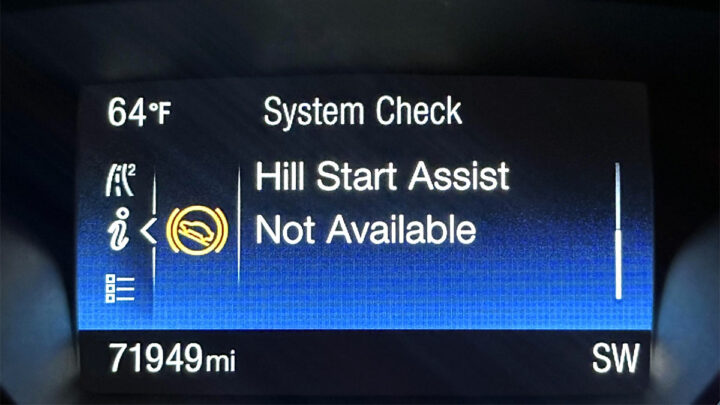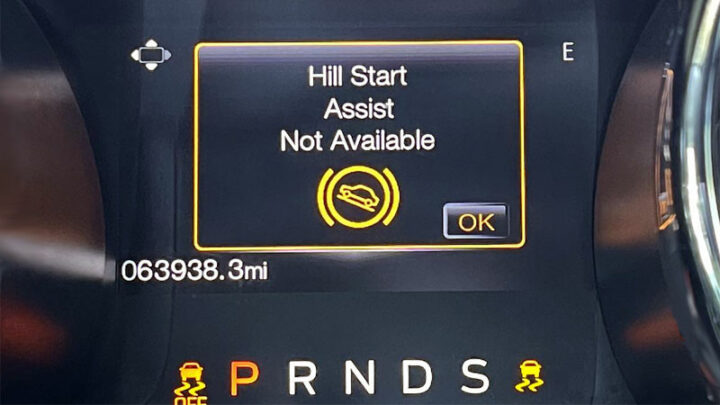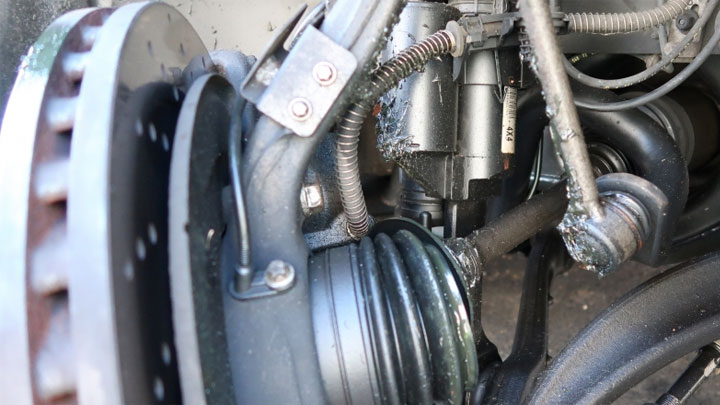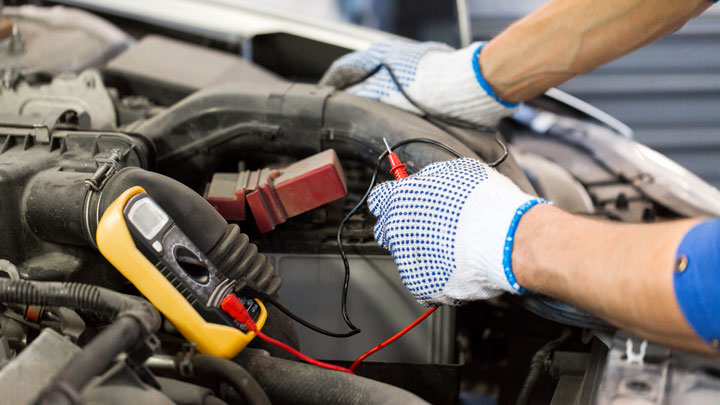Getting a “Hill Start Assist Not Available” Message? (Here’s What to Do)
Over the past decade, vehicles have begun to come equipped with a wide array of high-tech features that few could have formerly dreamed of. One such feature is Hill Start Assist, which aids in attaining traction on an incline in Ford vehicles (other car manufacturers may have similar systems).
While this feature can be quite helpful, it has served as a source of issue at times.
If you’re getting a “Hill Start Assist Not Available” message in your vehicle’s dash, there’s no reason to panic – you can continue driving. Here’s what this warning means, how it’s caused, and most importantly, how to fix it.

Related: Park Assist Blocked Warning Light
What Exactly Is Hill Start Assist?
Hill Start Assist is a technology that prevents a vehicle from rolling backward when stopped on a grade. This feature can be found on almost all late model vehicles and keeps a vehicle stationary when taking off on a grade during the short period it takes to actuate the accelerator pedal, after releasing a vehicle’s brakes.
Simply put, Hill Start Assist automatically controls the actuation of a vehicle’s brakes for a short period of time, even after the brake pedal itself has been released. This brake hold generally lasts for a specified period, or until a vehicle’s accelerator pedal has been depressed.
What Does “Hill Start Assist Not Available” Mean?
Many owners of various Ford models, including the Focus, Mustang, and Escape have become familiar with the display of a “Hill Start Assist Not Available” message, from time to time on their vehicle’s dash. This effectively means that a vehicle’s Hill Start Assist system has ceased operation, due to the logging of one or more active faults.
When this message is displayed, Hill Start Assist will be completely disabled, meaning that a vehicle will be prone to rolling backwards on an uphill slope when taking off from a stop, just as was always the case with vehicles of an older vintage.
That said, until the root cause of this issue is remedied, extra care should be taken when accelerating from a standstill on any type of hill.

Other Ford-specific warning messages: Service AdvanceTrac, Check Fuel Fill Inlet
Is It Safe to Continue Driving?
Yes, it is indeed safe to continue driving when a vehicle is displaying a “Hill Start Assist Not Available” message. This simply means that a fault related to the operability of this system has been logged, and as a result, system use has been disabled.
Aside from this, all other systems should work as otherwise intended. However, you should keep in mind that extra care will be required when taking off at any sort of grade.
Common Causes of Hill Start Assist Problems
There are several different underlying issues that commonly contribute to Hill Start Assist system problems. Understanding these potential issues typically minimizes downtime, allowing you to quickly single out the offending fault.
The following are several of the most common reasons for this warning.
#1 – Faulty Sensors

The Hill Start Assist system monitors a host of different sensors to ensure operational efficiency. If any of these sensors were to fail, feedback to the Hill Start Assist system would prove inconclusive, thus disabling the system as a whole.
Some of the most noteworthy of all sensors used in conjunction with this system include a vehicle’s wheel speed sensors and various incline sensors.
#2 – Low Battery Voltage

A vehicle’s starting and charging system must be operating optimally in order for Hill Start Assist to work. Fluctuations in battery voltage can easily result in the disabling of the system as a whole.
A reduction in alternator efficiency and/or corroded battery terminals often prove to be common culprits in the realm of such failures.
#3 – Off-Road or Irregular Driving Conditions

Some car owners have also reported difficulties with their vehicle’s Hill Start Assist system when venturing off-road. This typically results from natural wheel spin that occurs under these conditions, thereby presenting the chance for wheel speed sensor related faults to be logged.
Alternatively, there are also similar reports of such issues when attempting to conquer extremely steep grades, beyond those anticipated by engineers. In either case, issues of this type are often resolved by simply restarting the vehicle.
Read Also: Why is a “BSM Off” Message Appearing On My Dash?
How to Fix

The following steps should be taken to help in diagnosing and repairing the root cause of a vehicle’s Hill Start Assist issues. As always, consult factory-specific service literature for your particular model of vehicle before attempting any such repairs.
- Check Battery Voltage – While at idle, check the affected vehicle’s battery voltage with the use of a multimeter. Ideally, the voltage read should range between 13.7-14.2 volts/DC. Any reading below this threshold would indicate a potential charging issue that would require further diagnosis.
- Reset Hill Start Assist – A vehicle’s Hill Start Assist system can be manually reset by disconnecting a vehicle’s battery cables. These cables should be left disconnected for up to 15 minutes, allowing the connected module to reset. This will often be enough to fix any circumstantial related faults. Keep in mind that any saved preferences (like radio stations and seat position memory) will be erased and will have to be set again.
- Check Fault Codes – If such issues persist, it will be necessary to check the offending diagnostic fault codes with the use of an OBD-II scan tool. This will provide further guidance regarding the source of these failures. In most cases, the fault itself can be traced back to one or more compromised wheel speed sensors.
When to Get Professional Help
In most cases, the repair of Hill Start Assist-related issues will require the help of a professional when a reset of the system doesn’t resolve it. In short, a trip to a trusted automotive service center is often required to get to the bottom of such issues.
This is especially true if in any case when an OBD-II scan tool is not readily available for use. You must be capable of reading any offending faults, in order to rectify the issue at hand.
- P0480 Code (Symptoms, Causes, and How to Fix) - Apr 19, 2024
- Car Temperature Gauge Stopped Working? (Here’s Why) - Apr 15, 2024
- Ignition Coil vs Coil Pack (What’s the Difference?) - Apr 8, 2024
